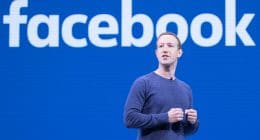Twitter is in trouble, for the umpteenth time. Despite a very active platform that is home to some of the latest news — and the discussions that surround them — Twitter is not having much material success. Despite the fact that the US president almost appears to think of the platform as a second home, the company’s recent earnings call was disappointing in the extreme. Well, Twitter is planning to bounce back in the game and towards that is shifting into a self-correction mode that will see it focus on the essentials.
Last week during its earnings report, it was revealed that Twitter saw a year-over-year decline in its Q4 ad revenue, which dropped from $641 million in 2015 to $638 million in 2016. In all, the company managed to lose $167 million last quarter and saw its user base grow by merely 4 percent year on year. Considering that its growth projections a couple of years ago saw it easily reaching 500 million users, a 4 percent growth rate when it is still stuck in the neighborhood of 350 million or so, is definitely not cause for celebration.
So Twitter is looking to bring in some major changes that can turn the tide about. The philosophy the company has arrived at to achieve this (as per TechCrunch) is pretty simple. It now wants to focus upon products that are driving more revenue, to the exclusion of those that are not.
CEO Jack Dorsey hinted at something of the sort when he said:
2017 will be about simplifying and differentiating our revenue products. It’ll take time for all the results we want to see.
during the latest earnings call.
Advertising and more importantly, how it takes place on Twitter, is another significant barrier to the growth of revenue. Consider this: The main difference between Twitter and other platforms like Facebook, Snapchat etc. lies in the fact that the main feed for the latter two usually has content from your friends. So at some level, most of the content on your feed is going to be relevant to you. At least relevant enough for you to take notice.
Twitter on the other hand, only recently started improving the quality of its news feed using algorithms. So users on the platform expect stuff theu don’t care about and as such, jump around and pause at something that they find interesting. Plus, while platforms like Instagram and Snapchat are indulging in aggressive advertising with ads that stand out, Twitter has been going for unobtrusive ads that are eager to ignore. All these factors aren’t really likely to have made it the first choice for advertisers.
The company is now looking to work on all these issues and lay all of its focus on the few products that do work, rather than dividing resources into experimenting with a hundred.
As per Anthony Noto, COO of the company:
We’ve . . . had success in some of our direct response products that have achieved significant scale, and we’ll continue to invest in those. [But] in the shareholder letter we talked about some of the direct response products that are challenged. We’re going to reevaluate whether we can be competitive in those products, or if we’re better off reallocating those resources to products that are doing really well or new areas of innovation that are more organic and more unique and differentiated to Twitter and that drive really strong engagement. And so that’s the philosophy.
Reallocation is the keyword here. From selling off Fabric to Google to shutting down Vine, and finally, to removing the Buy button — Twitter seems set to embark upon an aggressive round of in-house cleaning. Let’s hope that a leaner Twitter that is able to produce better results emerges at the other end of this soul searching. Because if things don’t work this time, investors could well step in and take matters into their own hands.





